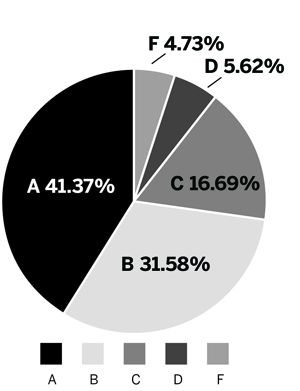Guest column: Inflated grade, degraded degree

April 24, 2012
The imminent arrival of yet another commencement ceremony provides us with an opportunity to reflect on what was learned and what was earned by this year’s cohort of soon-to-be alumni. Ongoing patterns of grade inflation in higher education tell us that the latter has very likely outstripped the former once again. If so, we all lose in the process.
Grade inflation is a textbook example of what public policy scholars call a collective action problem: when individually rational actions together constitute a collectively irrational outcome. All the involved parties (administration, faculty, students) appear to gain from the practice – but together we all bear a cost. For when grades are awarded that go beyond the actual level of achievement, the very nature of what we do in institutions of higher learning is called into question.
Begin with the basic lay of the land. Contrary to what conventional wisdom would lead us to believe, and contrary as well to the fundamental laws of statistical theory, the “average” is now well above average. For Kent campus courses during the Fall 2008 – Spring 2011 period, the distribution of grades for all undergraduate courses was as follows (in graphic):
In other words, nearly three-fourths of all grades (72.95 percent) were A’s or B’s. The grade that is supposed to represent the average performance (see your copy of the Undergraduate Catalog for a description of “C”) was actually awarded only one time for every six grades assigned; and only one-tenth (10.35 percent) of all grades fell into the “below average” or “failing” categories combined.
We work and we learn, apparently, in the mythical land of Lake Wobegon, where “all the children are above average.” It would all be oh-so-amusing if it weren’t so very serious.
Grades are the “coin of the realm” in higher education: the currency by which academic value is measured. Just like real money, however, when the value of the currency is cheapened by providing more of it than societal production warrants, an ugly inflationary cycle can take hold, with debilitating consequences.
In the real world of economics, those consequences are all too easy to discern. In the increasingly fantastical college environment, however, it simply looks like everyone is getting a free lunch. Students are coming to college less prepared than previous generations (whether measured by standardized test scores, the need for remedial courses or the number of hours spent studying) and yet are being given higher grades than ever before. What’s wrong with this picture, indeed?
What is wrong is that the people in whose interests we supposedly are acting — i.e., the taxpaying public — understand that there is a problem. Employers, in particular, tell us that they are concerned that all of those inflated G.P.A.’s that they see don’t translate into a more-capable workforce. As a result, the legitimacy of higher education suffers generally.
Finally, and perhaps most importantly, the group that are most hurt by grade inflation are the students who genuinely are above average, but can’t show it because so many mediocre students have been pushed artificially upward into the meritorious categories (remember all those A’s and B’s). Our best students deserve better than they are getting in our grade-inflated environment. If for no other reason than better serving their interests, we need to begin the long journey toward restoring sanity to the grading curve.
— Thom Yantek












